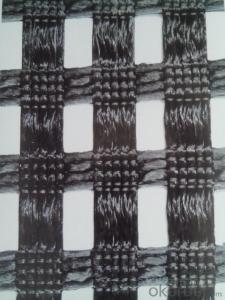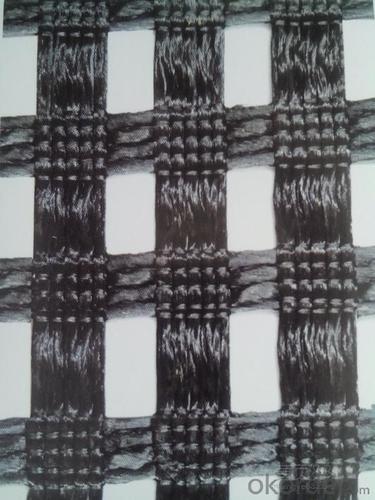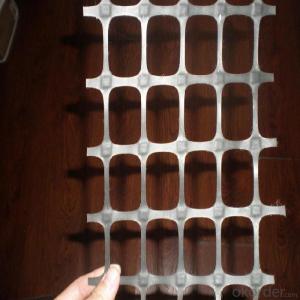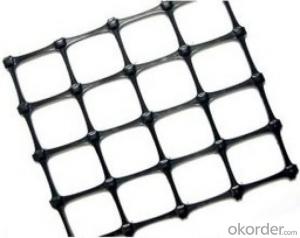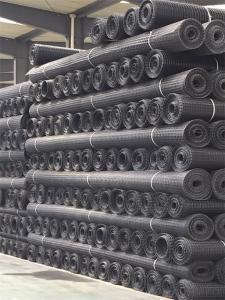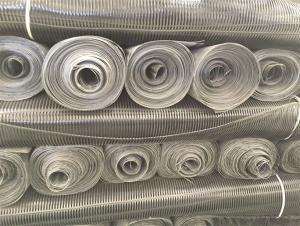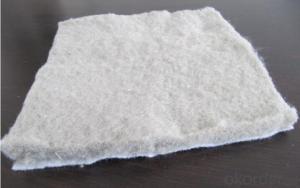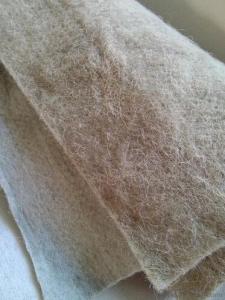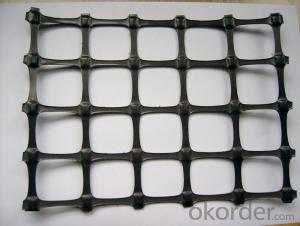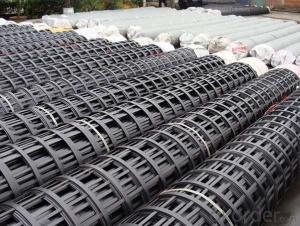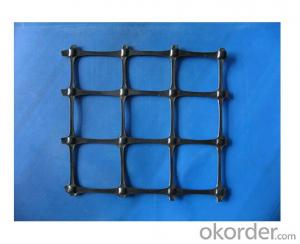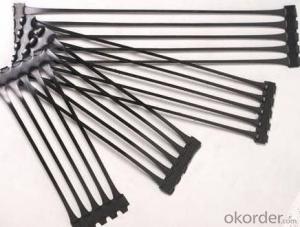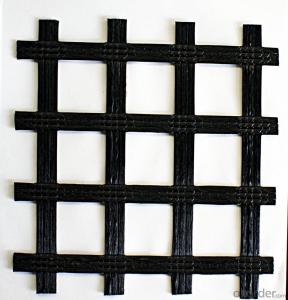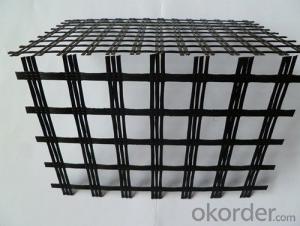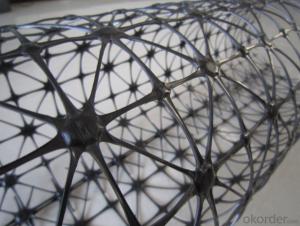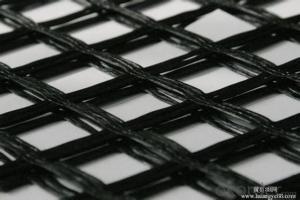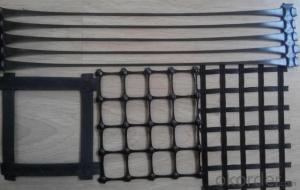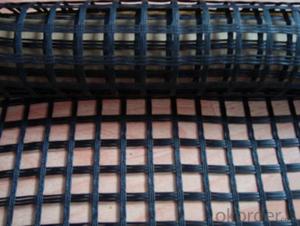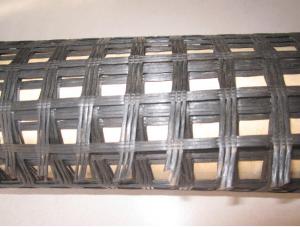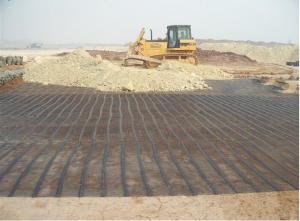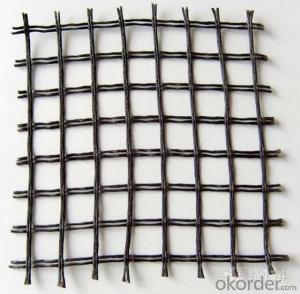Geogrids Philippines - Polyester Biaxial/Uniaxial Geogrid for Construction
- Loading Port:
- China main port
- Payment Terms:
- TT or LC
- Min Order Qty:
- 20000 m²
- Supply Capability:
- 2000000 m²/month
OKorder Service Pledge
OKorder Financial Service
You Might Also Like
1. Polyester Geogrid Description
Polyester geogrid is made by polyester, through special processing, and polyethylene (PE) or polypropylene (PP), and adding other assistants, by extrusion into composite type high tensile belt, and the surface is rough textured, for high strength reinforced geotextile strips.
The single band, the longitudinal, transverse certain space preparation or clamping arrangement, with special reinforcement welding technology welding the connection point bonding and molding, is reinforced with Geogrid.
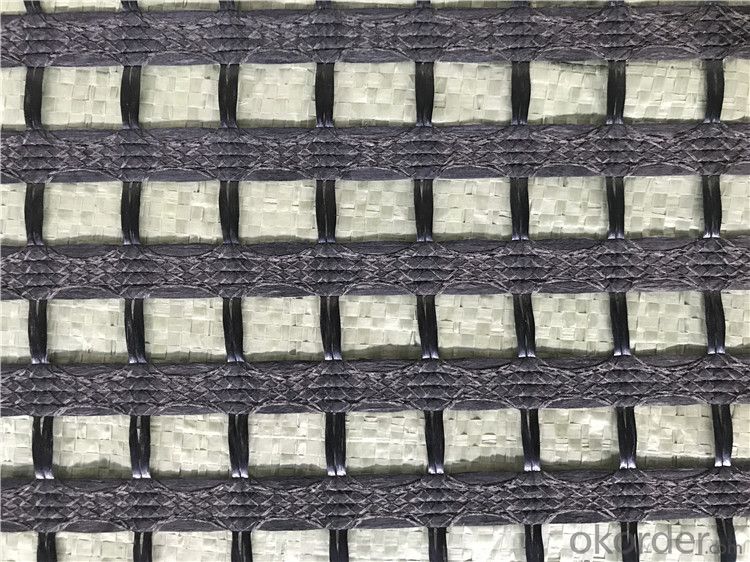
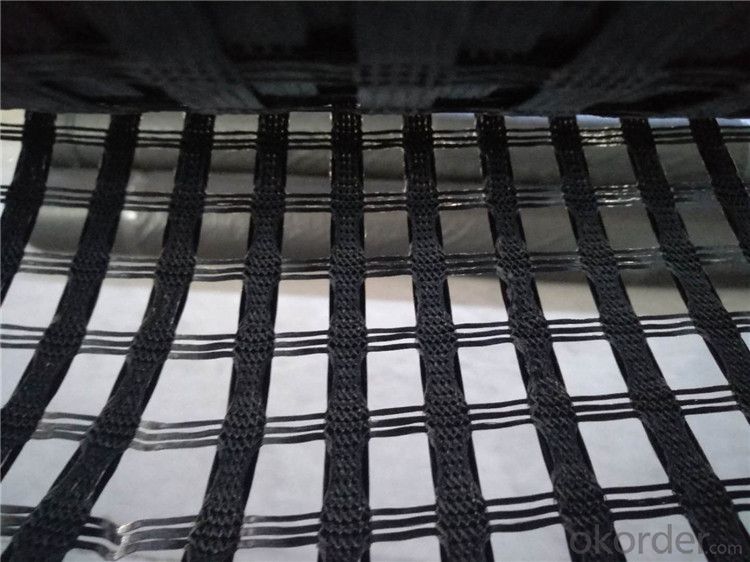
2. Geogrid Applications
1)Make reinforce treatment for various kinds of soft soil foundation to evenly distribute load stress and reduce uneven settlement, not easy to generate static electricity, and flammability property good in the coal mine. It is easy to wash coal.
2) Used in highway, railway, port, airport and municipal project. Support in the recovery working face of coal mine and roadway in the coal mine.
3. Geogrid Properties
1) High tensile strength
2) Low elongation
3) Anti-erosion, anti-aging
4) Good affinity with base
5)Light weight, water drainage
4. Geogrid Specification
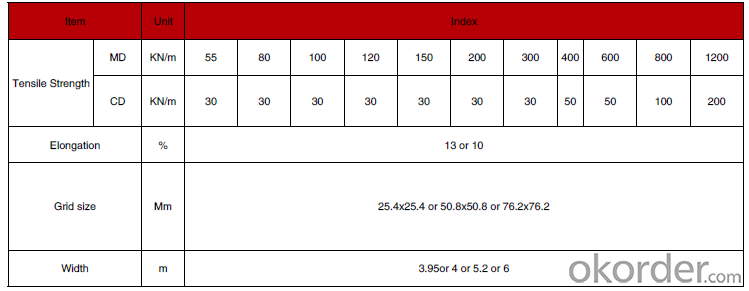
FAQ:
Q:How about the delivery time?
A:Lead time since receipt of 30% T/T deposit payment: 3 weeks.
Q:What kind of payments does jenor support?
A:T/T, L/C, Cash are accepted.
Q:What's are the MOQ?
A:We can according to your condition to set the MOQ.
And we can provide you samples for quality inspection.
Q:Do you charge for the samples?
A:Accordeing to our company policy, the samples are freee, we only charge the freight fee. And we will return the freight fee If you set the order .
Q:Can you produce the product according to customers' requirements ?
A:Sure, we are professional manufacturer, OEM and ODM are both welcome.
- Q: What is a geotextile mattress?
- Composite geotextile is also called soft mattress, soft soft row row. The upper filter geotextile layer, lower layer woven cloth layer, upper and lower two layers sewn into several units, each unit filling sand is formed around the main rib and frame shape auxiliary rib, the main vertical rib in the flow direction, the auxiliary rib along the flow direction, the composite geotextile soft volleyball has the advantages of good flexibility, in the process of riprap, can automatically adjust the overall shape, form a good protective line and the bearing capacity of stone, with good protection function
- Q: Can geogrids be used in underground mining operations?
- Yes, geogrids can be used in underground mining operations. Geogrids are a type of geosynthetic material that provide reinforcement and stability to soil or rock structures. In underground mining, geogrids can be used for ground support and stabilization, preventing collapses and enhancing safety. They can also be used for reinforcing roadways, tunnels, and other underground structures, improving their load-bearing capacity and longevity.
- Q: Longitudinal and transverse tensile strength more than 60kn/m which has several geogrid
- The ultimate tensile strength of geogrid from high to low in the order of glass fiber geogrid, geogrid, plastic geogrid, and ultimate elongation from high to low in the order of warp knitting, plastic grille grille (extension rate of raw materials as a warp knitted grill has a larger change range, some may be more than a small plastic grille), glassgrid. Glass fiber grille without creep.
- Q: Details of fiberglass geogrid
- 1, slow down reflection crackThe reflection crack is due to the old concrete surface layer in the vicinity of the joint or crack of large displacement caused by asphalt overlay in above the stress concentration caused by it, including horizontal displacement caused by changes in temperature and humidity, and caused by the traffic load of the vertical shear displacement. The former leads to the concentrated tensile stress in the asphalt overlay above the joint or crack, while the latter makes the asphalt overlay above the joint undergo large bending stress and shear stress.Because the modulus of geogrid is very large, up to 67Gpa, as the application of hard interlayer stiffness in asphalt overlay layer, its role is to inhibit stress, strain release, and at the same time as the asphalt concrete reinforced material, improve overlay tensile and shear capacity, so as to achieve the purpose of crack reduction. Practice shows that a change in the direction of the horizontal crack corresponding energy can be moved from its starting point 0.6 meters, more than 1.5 meters width of the reinforcement material helps to ensure that the energy dissipated on both sides of the crack completely.
- Q: Can geogrids be used in green wall systems?
- Yes, geogrids can be used in green wall systems. Geogrids provide stability and reinforcement to the structure, helping to support the weight of the green wall system and prevent soil erosion. They can be used to create a strong foundation and provide additional support for the plants, ensuring the success and longevity of the green wall.
- Q: Can geogrids be used in stormwater detention systems?
- Yes, geogrids can be used in stormwater detention systems. Geogrids are commonly used as a reinforcement material in these systems to enhance the stability and strength of the soil. They help to prevent soil erosion, improve drainage, and increase the overall efficiency of stormwater detention systems.
- Q: What are the application of Geogrid in the construction of cement concrete pavement
- On the basis of the surface of a layer of geogrid poured concrete
- Q: Do you need a geogrid to fill the stone roadbed?
- The use of geogrid can not give full play to the role of the embankment
- Q: Glass fiber mesh cloth is mainly used in what place
- Wall materials (such as glass fiber wall cloth, GRC wall panels, EPS internal and external wall insulation board, gypsum board, etc.)
- Q: Sampling method of Geogrid
- Sampling shall: in this batch of products were randomly selected from 3 volumes, the width and visual inspection in the inspection of qualified samples taken a roll, remove the outer layer length 500mm, intercept the full width of product 1m as mechanical properties; interception of full width of product 5m as test sample setting.
Send your message to us
Geogrids Philippines - Polyester Biaxial/Uniaxial Geogrid for Construction
- Loading Port:
- China main port
- Payment Terms:
- TT or LC
- Min Order Qty:
- 20000 m²
- Supply Capability:
- 2000000 m²/month
OKorder Service Pledge
OKorder Financial Service
Similar products
Hot products
Hot Searches
Related keywords
